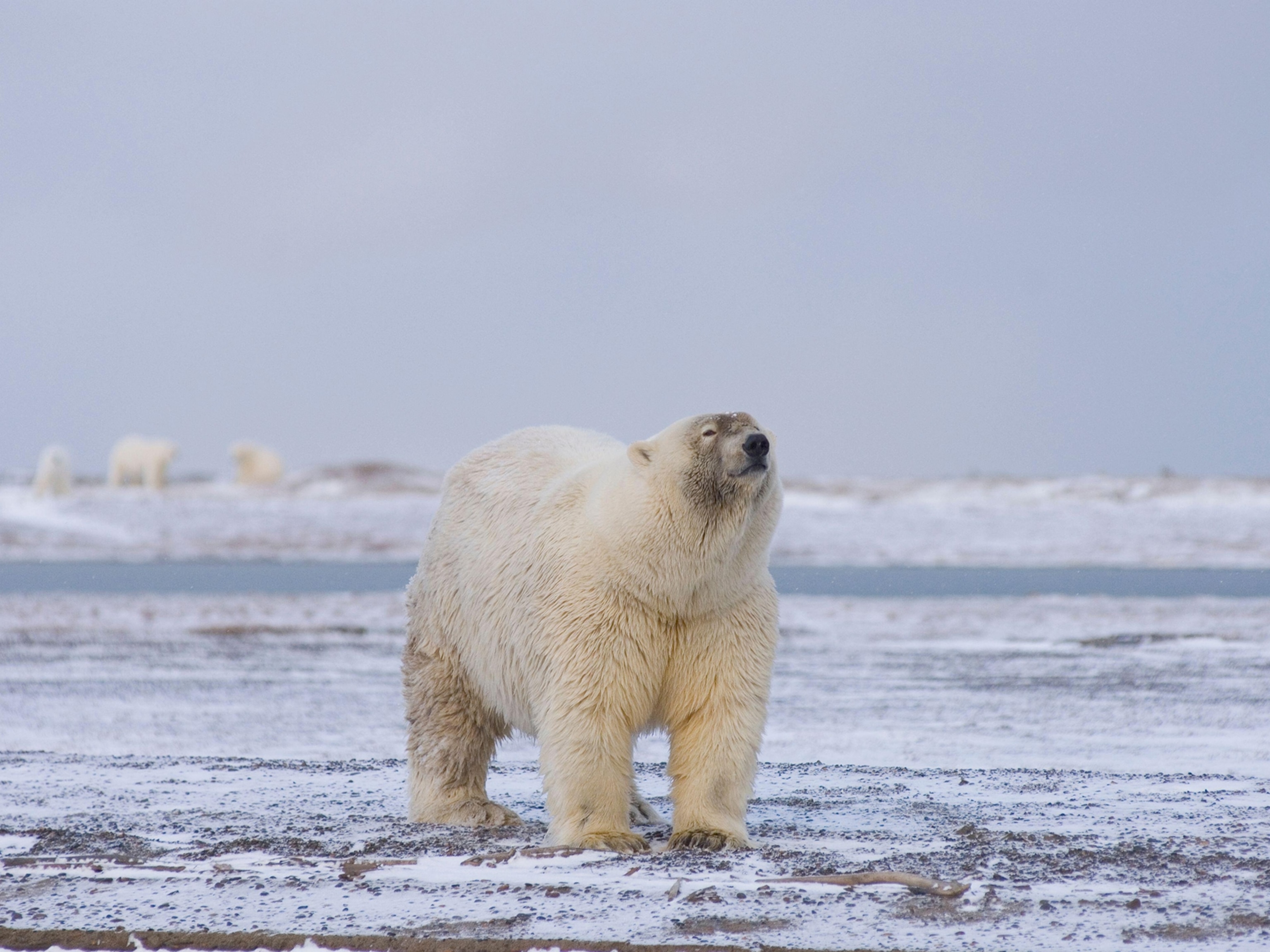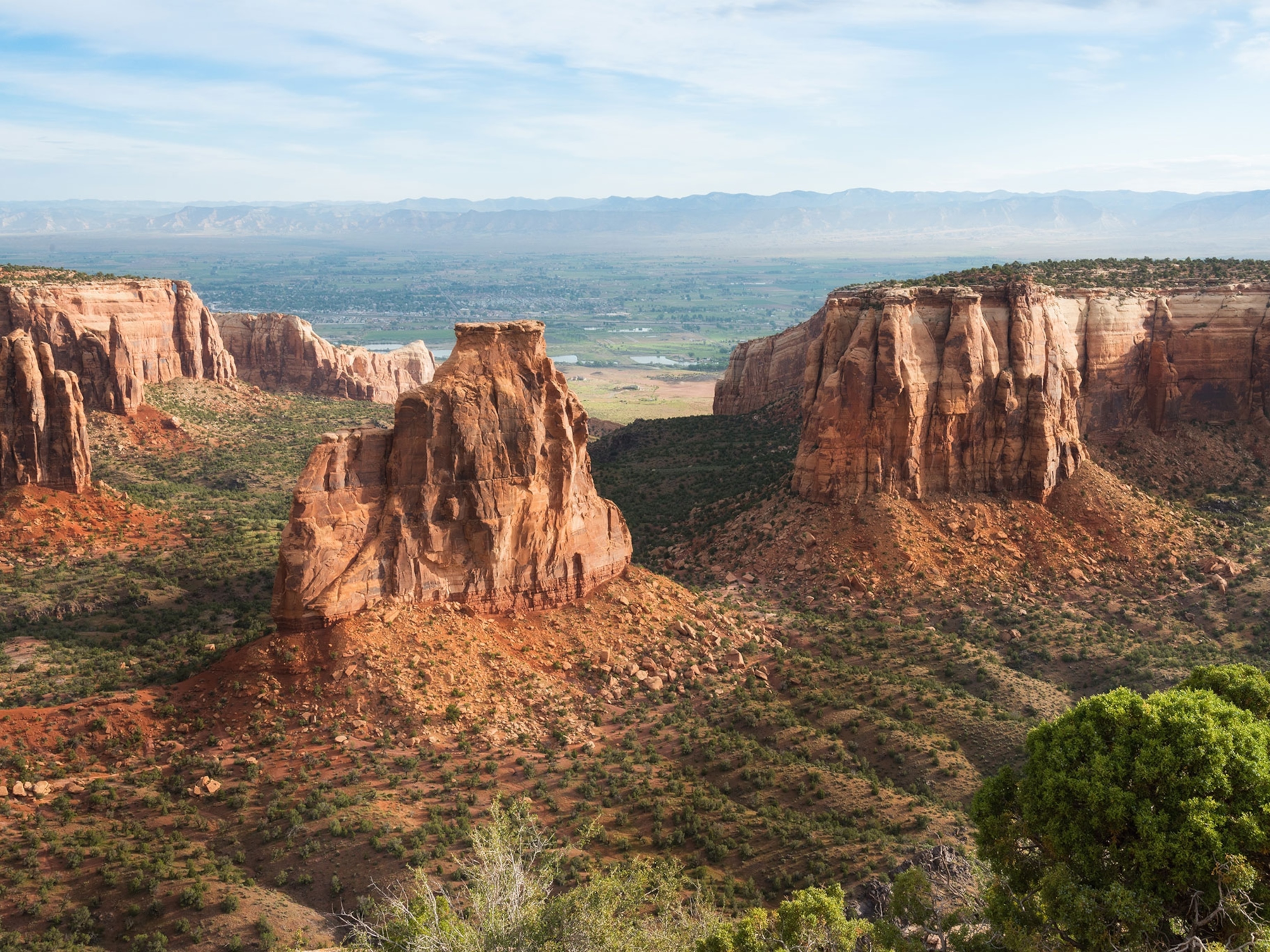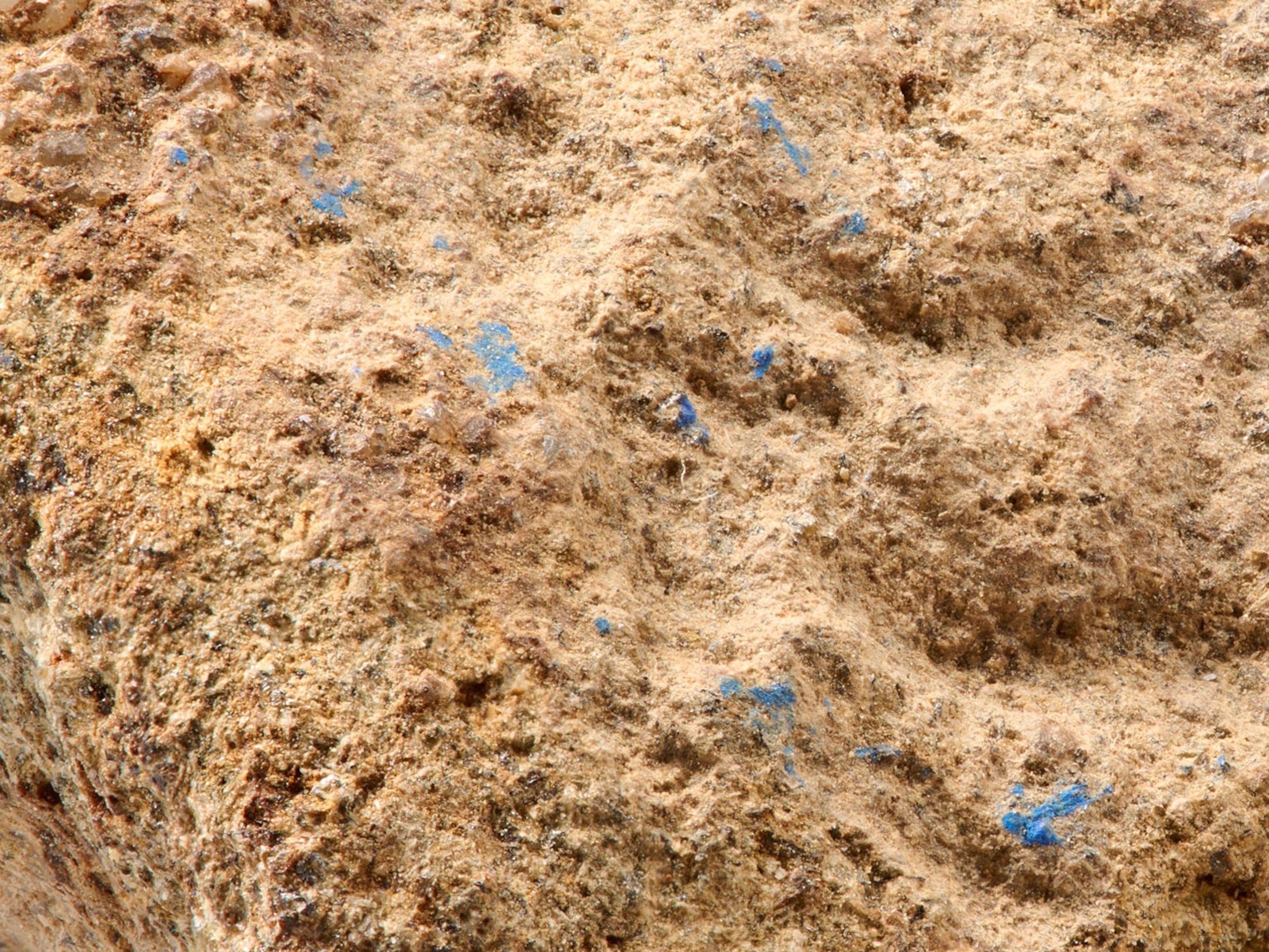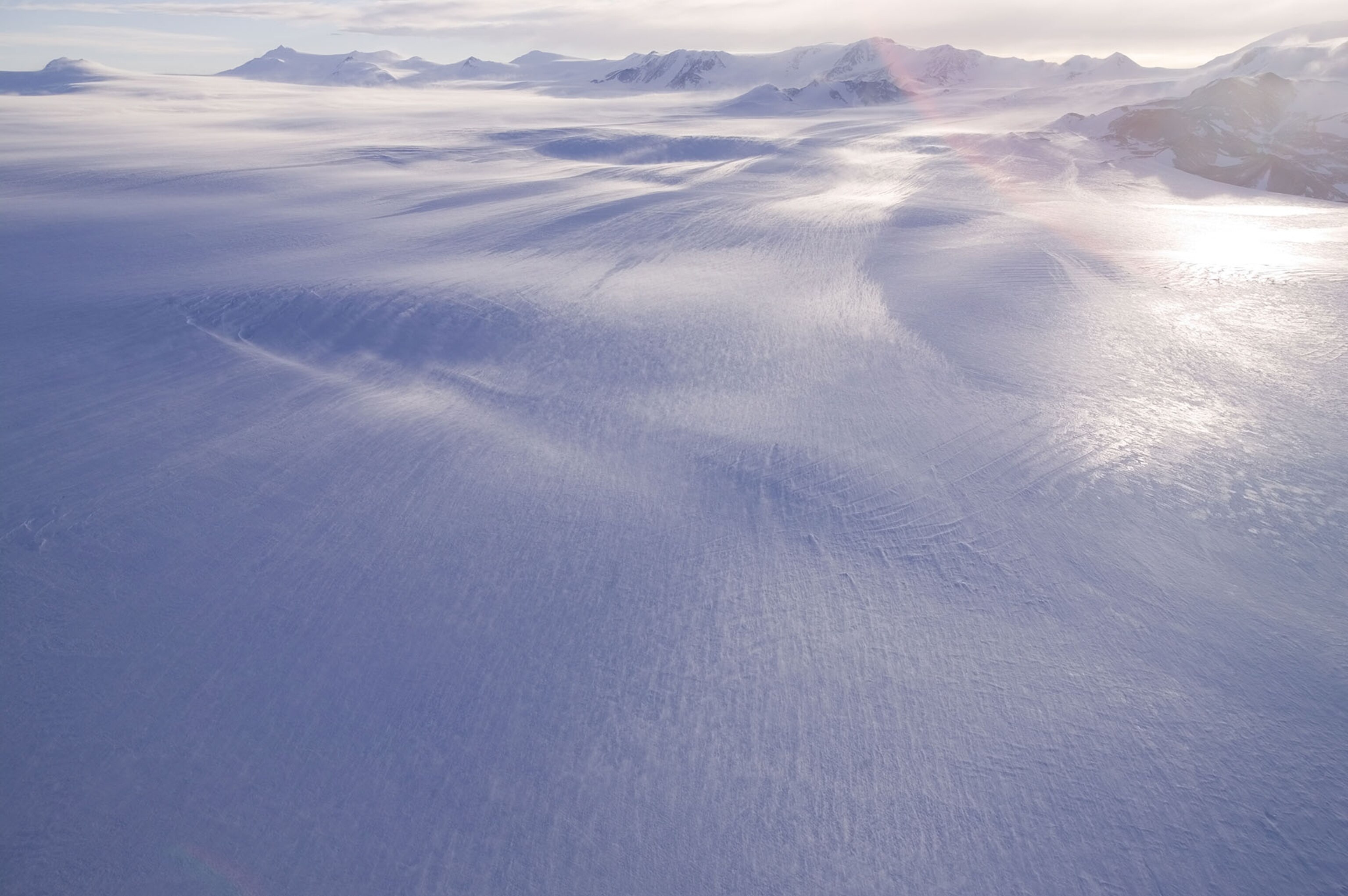
East Antarctic Ice Has a Wild Past. It May Be a Harbinger
The East Antarctic ice sheet has fluctuated wildly in the past, a study finds—adding to concerns of a dramatic meltback in the future.
Scientists sounding the seabed off Antarctica have uncovered some surprising episodes from the continent’s history: The East Antarctic Ice Sheet, they say, experienced a series of dramatic retreats in the distant past—retreats that were often punctuated by catastrophic floods of meltwater that erupted from beneath the ice sheet and left deep scars in the seafloor.
The ice covering East Antarctica, more than 12,000 feet thick in many places, has long been considered more stable and permanent than the West Antarctic Ice Sheet —and thus more likely to weather global warming unscathed. But the new research, published this week in Nature by Sean Gulick of the University of Texas, Amelia Shevenell of the University of South Florida, and their colleagues, reinforces a growing concern that large swaths of East Antarctica are more vulnerable than once thought.
In recent years scientists have mapped the East Antarctic bedrock with ice-penetrating radar and found that, like West Antarctica, it includes large regions that plunge thousands of feet below sea level. Because they sit on such low ground, those areas of the ice sheet are susceptible to melting by deep, warm ocean currents.
“There’s a lot of ice in these basins” of East Antarctica, says Robert DeConto, a glaciologist at the University of Massachusetts - Amherst. They are going to be “a big, honking potential contributor to sea level.”
One of the biggest is the Aurora Subglacial Basin. Much of the ice there flows to the sea through the Totten Glacier, which has been found to be thinning rapidly. To investigate the history of that part of the ice sheet, Gulick's and Shevenell's team collected evidence just offshore.
Sounding the Past
In February 2014, the researchers steamed along the Sabrina Coast of East Antarctica, picking their way among icebergs, in the icebreaker Nathaniel B. Palmer. A low thud resounded in the air every few seconds – the muffled burst of submerged air guns towed by the ship. The sound waves penetrated as far as 1,500 feet into the seabed before reflecting off internal boundaries in the sediments. Detectors at the surface recorded those echoes.
These seismic profiles, as they’re called, revealed hundreds of layers of mud, sand, and gravel that had been eroded off the Antarctic continent over millions of years by the slow action of glaciers, then carried out to sea. The deeper layers showed that Antarctic ice first appeared around 50 million years ago—just 15 million years after the dinosaurs died off, and “a lot earlier than we thought,” says Shevenell.
The succession of layers allowed Shevenell and her colleagues to reconstruct the ice sheet’s alternating episodes of expansion and retreat over the tens of millions of years that followed its initial formation.
During cold periods, the researchers found, the ice advanced 100 miles or more beyond its present-day edge, bulldozing out onto the continental shelf. In warm times, it ice shrank to less than its present-day size, retreating far into the Aurora Basin.
But the team was most intrigued by deep scars they found buried hundreds of feet beneath the seafloor. The V-shaped notches, cut into underlying layers of sand and mud, looked like “tunnel valleys”: Grooves cut by meltwater flowing under the ice sheet while it was sitting on the seafloor.
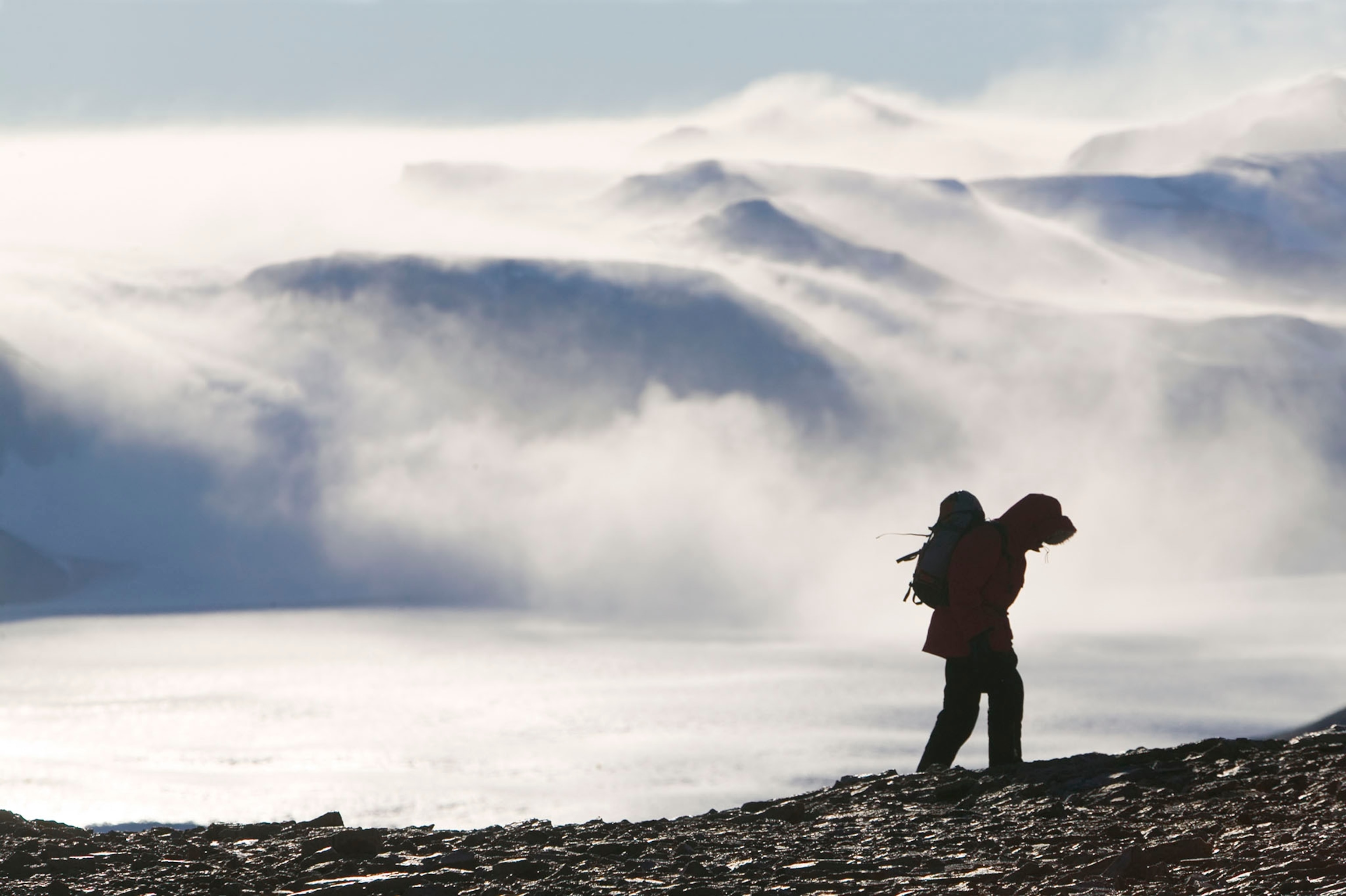
Scientists are familiar with tunnel valleys from North America and Europe, where they formed as the northern ice sheets were collapsing at the end of the last ice age, just over 10,000 years ago. But seeing such valleys off Antarctica “caught us completely by surprise,” says Shevenell.
At over half a mile wide and 500 feet deep, the largest of these grooves could have carried as much water as the Mississippi River – for a geologic instant. The researchers think they might have been formed by catastrophic events, when vast lakes of melt water on the glacier’s surface suddenly drained through cracks in the ice.
“For a short period of time you have a Niagara Falls amount of water pouring down to the base of the ice sheet,” says Slawek Tulaczyk, a glaciologist at the University of California, Santa Cruz, who was not part of the research team but who studies the flow of water beneath ice sheets. When that water hits soft sediments under the ice, “it will just chew into that and erode a tunnel quite readily.”
The Past Is Prologue?
One or more of these floods occurred during at least 11 episodes in the period between 30 million and six million years ago, the new study finds. The floods likely happened during periods of tumultuous transition, when the ice sheet had expanded to well beyond its present-day size. The ice was then hit by a rapidly warming climate, with hot summers causing vast lakes of meltwater to form on its surface—and it roared into retreat.
The air above most of the East and West Antarctic ice sheets today is too cold for them to melt at the surface. They are mainly shrinking from the underside, in spots where the edge of the ice is strafed by deep, warm ocean currents.
But DeConto says that things won’t necessarily stay that way. “There is this growing recognition,” he says, “that in Antarctica it’s not going to be just about the ocean-ice interaction, and that atmospheric processes” – warm summer air – “could play a role if greenhouse gases get high enough.”
When might that happen? DeConto cautions against drawing too strong a conclusion from floods that happened millions of years ago, when the very land under the Antarctic ice might have been shaped differently, and, owing to changes in Earth’s orbit, the continent might have been getting more sunlight and heat during summer than it does today.
Even so, there is one concerning thing about the new results, says DeConto. During much of the time that Antarctica was repeatedly losing so much ice off its topside, levels of carbon dioxide in the atmosphere were similar to what they are today – perhaps only a little higher. By the end of the century, DeConto says, “we’re going to be climbing way outside of that range.”




